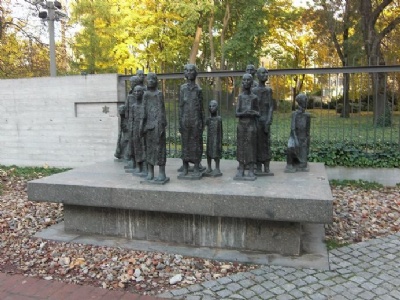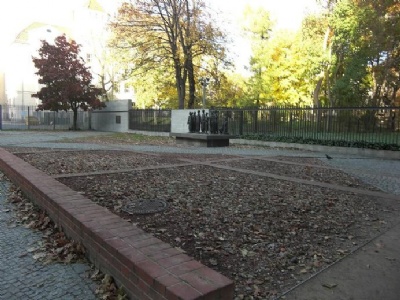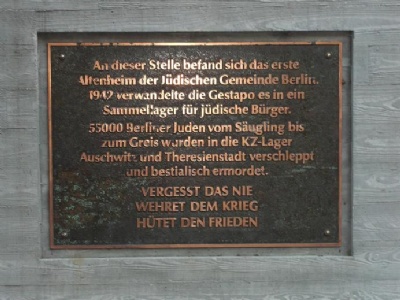Berlin – Hamburger Strasse
In 1828, a retirement home for Jews was built in Berlin on Grosse Hamburger Strasse. In 1942, the Gestapo took over the home and an adjacent Jewish boys’ school and set up a Collection camp (German Samellager) for Jews in Berlin to be deported to a ghetto, camp or extermination camp in Eastern Europe. Another collection camp was on Rosenstrasse about 300 meters from Hamburger Strasse. Jews who were to be deported to Eastern Europe were rounded up from their homes or work and taken to Hamburger Strasse or Rosenstrasse. They were detained there for a few days before being taken to one of Berlin’s three train stations (Grünewald Bahnhof, Anhalter Bahnhof or Güterbahn Moabit) for further eastward transport. Between 50,000 – 55,000 Jews from Berlin were deported to Eastern Europe. The retirement home was destroyed during a bombing in 1943.
Current status: Demolished with monument (2010).
Address: Grosse Hamburger Strasse, 10115 Berlin.
Get there: Metro to Hackescher markt Station.
Follow up in books: Gilbert, Martin: The Holocaust: A History of the Jews of Europe During the Second World War (1987).



Behind the retirement home there was a Jewish Burial Site that the Nazis partly destroyed in 1943 in order to build a shelter. In 1945, 3,000 civilians and soldiers were buried in a mass grave at this Burial Site. After the war, the Burial Site was renovated and there are several monuments dedicated to buried Jews and a monument dedicated to the victims in the mass grave.
After the end of the war, other bodies were also moved to the Burial Site and buried. One of these bodies is said to be the head of the Gestapo, Heinrich Müller, whose fate is still unclear. A probable theory is that he died in Berlin at the end of the war but the body was not found. Some reports suggest that he was first buried in a provisional grave at one of Berlin’s airports. One body in general’s uniform had documents on it which could be interpreted as it was Heinrich Müller. The body (with others) was later moved in 1945 to a new mass grave at the Jewish Burial Site in central Berlin. When this information was discovered decades later, it aroused strong reactions that the head of the Gestapo would be buried at Jewish Burial Site. But according to Jewish tradition, graves must not be opened, regardless who is buried in the grave. It is far from established that Müller’s remains are in the grave and we will probably never find out.